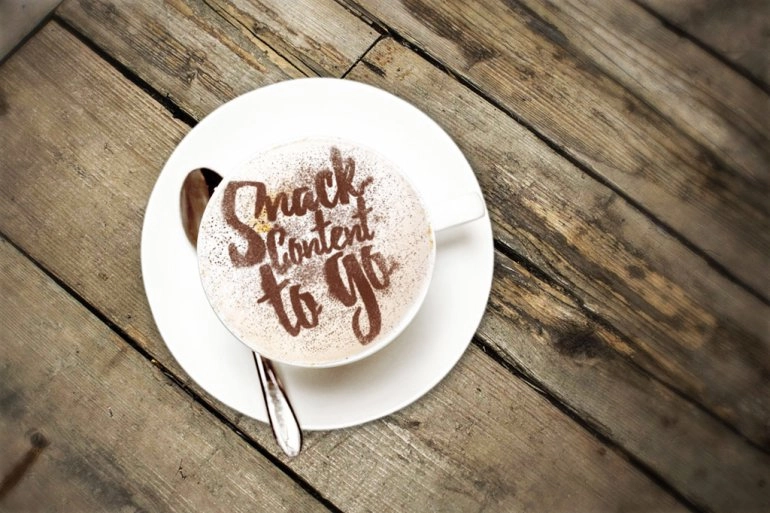Take 6 pounds funny videos or GIFs, stir them with a couple of texts, add 10 drops of memes and photos, mix in a pinch of snaps, another 3 teaspoons humour and top it with a tablespoon of storytelling – Snack content is ready! Check out what makes this handy portion of content the perfect trigger to appease one’s hunger.
Snack – Simple. Narrative. Attractive. Clever. Keen.
Everyone has that one friend who starts with one 9GAG GIF and then gets trapped for hours or leaves countless likes, wows and loves on nearly every meme he / she can find in the never-ending newsfeed. Snack-content is the term marketer’s use for the phenomena. The magic of snack-content comes from its unique form: It’s mostly full-video content, which catches the attention of wide masses within seconds, regardless of time and space – the ideal tool for mobile-affine target groups. Since the average attention span of people online only covers about 8 seconds, marketers increasingly count on content marketing to position strategies and brands. Snack content is a smooth trigger here, since it is shaped by actuality, emotionality and viral performance. No matter how full the Facebook timeline is, in regards of time and taste you can’t go wrong with photo-snacks, information-snacks or live-snacks.
2016: Under the banner of video content
With worldwide about 1.7 billion monthly users, Facebook inhabits the pole-position of all social media platforms.1 Social trends emerge where the target group is. During the first two quarters of the year, Facebook launched its live- and 360-degree video features. It soon became clear that 2016 would become a year of visual effects. Commercial and PR agencies soon adapted their social media communication to visual content strategies. Short-videos perfectly match the habits and short dwell time of the user. They reduce extensive messages to easily bite-sized content. So picture-based channels like Instagram, Vine and Facebook’s rival number one Snapchat steadily undertake increase in popularity.
While Twitter shut down Vine which now operates under the new name “Hype”, Zuckerberg copies Snapchat-features and integrates them in a slightly different form on Instagram. When the head of a 340 billion US-Dollar imperium starts to emulate other platforms, there can be no doubt that the prognosis that by 2019 video content will make about 80% of all Internet traffic has its reasons.2 Virtual and Augmented Reality will definitely contribute to that trend, too.
Will the snack become the main course?
Snack content acts like the brake zone of a supermarket. The entertaining content causes a slow-down effect when the user takes time to examine the content. Snack content is like a good joke - it eases the atmosphere and makes the target group receptive for more content. Thus generic brand touchpoints and slow entries into a company’s product scope are enabled. Fast-speed storytelling transmits the necessary aha-reactions and insider effects. Video content sustainably transports curiosity and affection and is very efficient for new brands, as it conveys way more emotions than text-based content.
Snack content should definitely be part of every brand’s marketing-mix. Still, the main course namely value-added content shouldn’t be omitted. Even if good content is much more than SEO and link building these parameters, allow search engines to screen search requests and build corresponding profiles. One big plus of snack content is the possible multi-channel communication. Instead of sharing the same post on every channel, snack content enables brands to precisely appeal to each target group differently. Just like Mark Zuckerberg did with Evan Spiegel, brands can and should learn from influencers by watching.
Are you hungry already? Feel free to take a bite!
With this in mind, happy holidays and a happy New Year!
